Introduction
With innovation and development in technology, most customers are more informed about products that are available in the market. These customers are also more informed about their needs and their requirement from goods and services. Many companies that produce several products have also come up and they all compete for the attention of a similar market. Advertising has been proposed to have two theories of how it works which are a strong theory and a weak theory.
The strong theory of advertising suggests that for advertising to have an impact, an individual has to be persuaded to close the deal for the advertiser by making a purchase while the weak theory suggests that an individual is reminded to make a purchase for a particular brand of product.
However, advertisements use the same concepts to attract and hook the attention of the consumer and finally, close the deal after the client makes a purchase. This paper will take a look into the different communication models that are utilized in advertising and give an example of a successful advertisement that has been made in the 21st century. The paper will also look at the AIDA Attention Interest Desire and Action advertising model used in the Mac vs. PC model.
The critical debate is that, the modes of advertising currently used in the world today have evolved but the concepts that are used are still the same as those that were used a long time ago even before innovation and technology advanced. Even though consumers are more aware of their needs and rights, the concept of persuading and trying to keep consumers loyal to brands remains the same.
Communication Models
All advertising and business organizations that intend on selling their products or services to consumers are aware of the need to attract and maintain the attention of consumers so that they can purchase products or services from the company and work to contribute to high profit margins for companies (Barker and Angelopulo 2005, 242).
Many companies spend large amounts of money on advertising just for this purpose. One of the communication models used by many advertising companies is abbreviated as AIDA (Attention, Interest, Desire, and Action).
Attention
Research surveys show that companies have a window of 3-4 seconds to attract the attention of a potential consumer after which the consumer would no longer be interested in the product or service. It is important for a business or organization to maximize on this chance by providing important information to the client such as great value or chance that the client might get (Howard & Sheth 1969, p40). The information provided to the client by the seller should be what the client wants to hear.
For example, if it is a hair product like a shampoo, clients should hear of how the product would increase the volume of their hair at a very pocket friendly price. This is bound to make clients to feel as if they are getting value for their money which is the intention of all clients. If the client’s interest is not sparked at this moment, an opportunity to gain a customer might have been lost (Bendixen 1993, p 17).
Desire
Advertising used should make the client believe that the product or service is relevant. A catchy statement which has genuine appeal should be used. The statement should however, not be over the top as to make the consumers doubt the reliability of the product. It should not make unrealistic promises (O’Guinn, Richard & Allen, 2010, p16)
Action
This is the final step as it involves the consumer making the purchase for the product or the service which was the goal of the advertising (Wonacott & Wonacott, 1990, p 23).
Lavidge & Steiner
This communication model was proposed in 1961 by Robert Lavidge and Gary Steiner. The model was proposed especially for consumers that might be developing the awareness of a product for the first time. Seven steps are involved in this model.
Awareness
In this stage the consumer is informed of the existence of the product in the market.
Knowledge
The customer is made aware of the different uses or features of the product (Hoek et al 2000 p 54).
Liking
The consumer gets a positive feeling about the product (Lavidge & Steiner1961, p11).
Preference
The consumer chooses the product over other similar available products from different brands.
Conviction
The customer develops a strong feeling of having the right decision to purchase the particular product (Dukta 1995, p45).
Purchase
This is the final stage whereby, the deal is closed after the consumer makes the purchase. Hyundai Motors ltd is an example of a company that used Lavidge & Steiner model to introduce Santro in India which was a small car that they had introduced into the market.
Dagmar
It stands for Defining Advertising Goals for Measured Advertising Results. This model was proposed in 1961 by Rusell Colley. The model proposed that an individual goes through four processes before they can make a decision on whether or not to make a purchase which are; awareness, comprehension, conviction and action (Hackley 2010 p20). Before an individual makes a purchase of the product, they will develop awareness of the product before a particular period of time because they were not aware of the presence of the product in the market.
Consumers then associate the image and feelings with the characteristics that they are made aware of in the comprehension stage and they develop positive feelings about the product or service and finally, they make the decision that closes the deal when they purchase the product (Royd 2007, p62). DAGMAR stresses the need for communication and being specific so that the goals of the advertiser can be measured while following the set objectives to be achieved over a specified period of time over a target audience (Coley 1984, p76).
ATR (awareness, trial, reinforce)
The consumers have to become aware of the product due to perceived benefits. Once the consumer makes a decision to purchase the product, he or she tries it and finds out whether the perceived benefits are equal to the expectations. The consumer might fail to make a purchase if they perceive the product to be too expensive as advertised or if he or she perceives the benefits to be hyped (Blythe 2007, p93).
Once the consumer tries the product and verifies the benefits and makes the mental note that the benefits are equal or greater to the implied or expected benefits, then, the consumer is bound to make another purchase of the same product. If a consumer decides that the product does not meet his or her requirements, they might not purchase the product again.
A consumer might, however, purchase the product again even if they perceive it is unsatisfactory if the product might have benefits such as lower price in comparison to other competing brands which the consumer might presume to be satisfactory (O’Guinn, et al 2010, p74).
ATRN (Awareness, trial, reinforce and nudge)
In this advertising model, the advertiser makes the consumer aware of the presence of the product in the market. The awareness arouses curiosity in the consumer which could lead them to try to use the product which has been made available in the market.
The reinforcement provides reassurance that the product confers the applied benefits and informs consumers that they have made the right decision by purchasing the product. The nudging part of the advertisement reminds the consumer of the benefits of making a purchase or informs them of existing offers so that they can make more purchases of the product (Hackley 2010, 41).
Current Advertising Campaign
The Mac vs. PC advertising campaign is one of the most successful advertising campaigns of the 21st century. The advertising campaign took advantage of known communication models that have been used in advertising for many years. The advertising campaign was initiated in 2006 whereby, 66 commercials in total were run on media. The commercial mainly featured John Hodgman as well known comic and Justin Long the actor. Hodgman plays the role of PC while long plays the role of Mac.
The advert begins with Mac saying how PCs are convenient for use for spreadsheets but they are not applicable when it comes to commonly used applications like movies or photos. This irritates PC who points out how conveniently he can use iPod and iTunes. At this juncture, the advertising campaign uses all the above communication models discussed above by creating awareness of the product. The advertising campaign goes on further to enlighten the consumer on the availability of the different products in the market.
The interest of the consumer is awakened and an individual just wants to get more information concerning the different features of the product. Mac highlights the particular feature of the Mac which is dedicated to entertainment feature including iPhoto, iWeb and iMovie. On the third part of the commercial, Mac briefs PC on how it would be easy for him to network with compatible devices such as a digital camera. PC cannot be able to take advantage of this feature because he does not speak Japanese.
Lavidge and Steiner advertising model because after awareness, the commercial adds knowledge to the consumer by informing them of all the features that are made available by the product. After seeing the commercial, a consumer likes the features that Mac presents and they develop an attitude to Mac.
The advertising campaign also offers consumers a reason to have preference for Mac instead of PC. Even for an individual who would not be in need of all the features that are available from Mac, they would purchase Mac product so that they can feel that they are getting value for their money (Hackley 2010, p36).
The Conviction part of the advertising model is observed in the fourth commercial whereby, Mac shows superiority over PC by not freezing which is what PC keeps on doing. A consumer who wants to purchase a Mac product is bound to feel that they will make the correct decision when they purchase the product because their Mac does not freeze. In the fifth commercial, PC is portrayed as constantly getting ill due to high susceptibility to viruses unlike Mac who is strong throughout the commercials.
In the sixth advert, Mac accounts the review of a technology expert as Mac being highly rated in performance and reliability (Colley 1984, p.88). In the next commercial, Mac portrays how a Mac can be used straight out of the box without having to get different time consuming installations. All these positive features are bound to make the consumer purchase a Mac product. The advert was well thought of and it led to an increase in sales for Mac showing that it was effective.
Conclusion
The paper has analyzed the different models that are used in communicating in advertising. All the models used have different minor details but their basis is the creation of awareness of their products to consumers (Hoek et al 2006, p 95).
Once the consumers are aware of the positive features of products, they decide on whether or not to buy the products and once they decide to purchase the product, the deal is sealed and fulfils the goal of the advertiser. He paper has also looked at the Lavidge and Steiner model that was used on the Mac vs. PC model which was one of the most successful advertisements that was run in 2006.
Reference List
Barker, R & Angelopulo, C 2005, Integrated Organizational Communication, Juta & Co, Capetown.
Bendixen, M 1993, “Advertising Effects & Effectiveness,” European Journal of Marketing. vol. 27, no. 10, pp. 19-32.
Blythe, J 2007, Principles & Practice of Marketing, Cengage Brain, Ohio.
Colley, RH 1984, Defining Advertising Goals for Measured advertising Results, McMillian Publishers, Washington, DC.
Dukta, S 1995, Dagmar: Defining Advertising Goals for Measured advertising, Routledge, London.
Hackley, C 2010, Advertising & promotion; An Integrated Marketing communications. Sage Publications, California.
Hoek, J, Dunnet, J, Wright, M, & Gendall, P. 2000. “Descriptive and Evaluative attributes: What Relevance to Marketers,” Journal of product & brand management, vol. 9, no. 6, pp. 414- 435.
Howard, J, & Sheth, N 1969, The Theory of Buyer Behavior, John Wiley & Sons, New York.
Lavidge, R. & Steiner, A 1961, “A Model for Predictive Measurements of Advertising Effectiveness”, Journal of Marketing, pp. 59-62.
O’Guinn, CT, Richard, JS, & Allen, CT. 2010. Advertising & Integrated promotion. Ohio, Cengage Brain.
Royd, L. 2007. “Cause Related Marketing: A New Perspective on Achieving Campaign Objectives Amongst Fast Moving Consumer Goods,” Briefs in Entrepreneurial Finance Journal, vol. 16, no. 1-2, pp. 79-86.
Wonacott, R. & Wonacott, T. 1970, Econometrics. John Wiley & Sons, New York.
Mac advert

Apple’s “Get a Mac” campaign may be one of the most persuasive and successful awareness campaigns of all time. It simplifies the commonly asked question “Mac vs. PC” and changed the perception of millions of consumers. We at ‘Use a Mac’ are so in love with this campaign and its allure that we’ve decided to showcase the complete series of commercials for all to see. Whether you’re thinking of buying a Mac or just a fan of Apple’s work, this is a post that everyone will love.
1. Get a Mac – Better

Watch “”Get a Mac” – Better
May 2006 – In “Better”, the first of the 66 Get a Mac commercials, we’re introduced to comic John Hodgman and actor Justin Long, who play the roles of PC and Mac, respectively. This Mac versus PC dialogue quickly points out how square and boring PCs are when compared to a Mac – that they’re great at spreadsheets but not as great at fun stuff like photos and movies. To say that Macs are “better”, however, gets under PC’s skin.
2. Get a Mac – iLife

Watch “Get a Mac” – iLife
May 2006 – In this Get A Mac commercial, PC shows off just how compatible he is with the iPod and iTunes, only to have Mac show him up with his full suite of entertainment and media capabilities that come on every mac – thanks to the iLife program. PC tries to counter by pointing out all of the free and bundled apps that come with him, but calculators and clocks aren’t nearly as cool as iPhoto, iWeb or iMovie.
3. Get a Mac – Networking
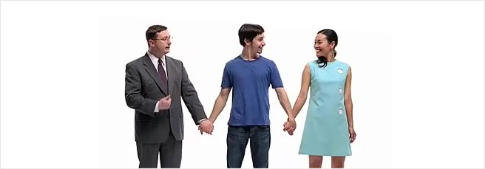
Watch “Get a Mac” – Networking
May 2006 – In this Mac versus PC commercial, Mac demonstrates how easily he can network with other devices – in this instance, a digital camera from Japan. PC, on the other hand, just doesn’t speak the device’s language.
4. Get a Mac – Restarting
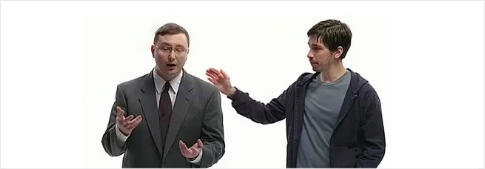
Watch “Get a Mac” – Restarting
May 2006 – In this 4th Get a Mac commercial, PC continually freezes and needs to restart – making a conversation between PC and Mac downright impossible. And, when PC tries to point out that Macs can relate to this sort of issue, Mac shoots PC down.
5. Get a Mac – Viruses

Watch “Get a Mac” – Viruses
May 2006 – When it comes to the battle of Mac versus PC, viruses are perhaps one of the sorest spots for the PC. In this Get a Mac commercial, PC is feeling a bit ill, pointing out just how susceptible he is to catching viruses. Mac is nice and healthy – since he’s far less vulnerable to such maladies.
6. Get a Mac – Wall Street Journal
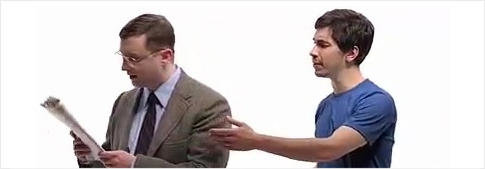
Watch “Get a Mac” – Wall Street Jounal
May 2006 – In the 6th Mac versus PC ad, Mac reads a copy of the Wall Street Journal, pointing out a rave review from a technology writer. PC tries to counter with a fake review, but it’s impossible not to see right through the lie.
7. Get a Mac – Out Of The Box
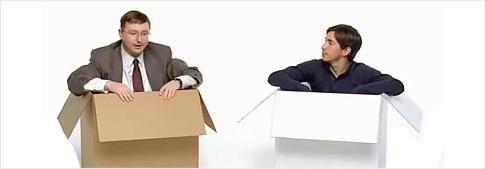
Watch “Get a Mac” – Out Of The Box
June 2006 – In this Get a Mac commercial, Mac points out that he is ready to use right out of the box, as opposed to PC, who needs to do a lot of housekeeping before getting down to business.
8. Get a Mac – Touche

Watch “Get a Mac” – Touché
June 2006 – PC doesn’t really seem to understand the meaning of the world “touche”, in this, the 8th Get a Mac ad in the series – a commercial that also points out how PC users can enjoy both Windows and Mac OS on their new Mac computers.
9. Get a Mac – Work vs. Home
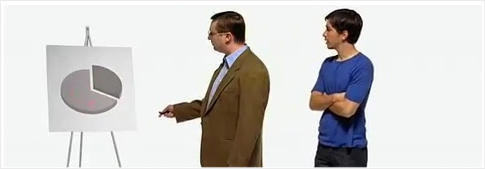
Watch “Get a Mac” – Work vs. Home
June 2006 – Why does a computer user have to choose between having fun on a computer or doing work? They don’t when they choose to get a Mac – at least not according to this Mac versus PC commercial.
10. Get a Mac – Accident
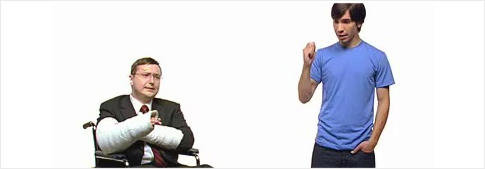
Watch “Get a Mac” – Accident
August 2006 – In the get a Mac commercial “Accident”, the magnetic release power cord on every Mac is introduced. PC, who doesn’t have such a safety device however, was injured because someone tripped over his cord, knocking him to the ground.
11. Get a Mac – Angel/Devil
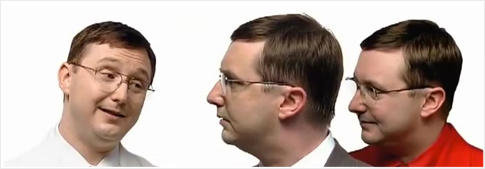
Watch “Get a Mac” – Angel/Devil
August 2006 – “Angel/Devil”, the 11th ad in the Get A Mac campaign, shows off the wonders of iPhoto and its ability to make a customizable photo book. PC is visited by both an angel and a devil apparition of himself – the angel, wanting to compliment Mac’s photo book and the devil, wanting to rip it up.
12. Get a Mac – Trust Mac
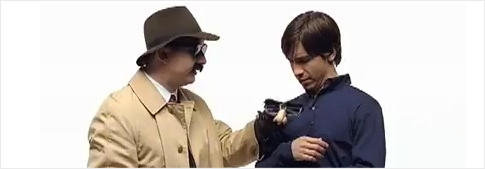
Watch “Get a Mac” – Trust Mac
August 2006 – “Trust Mac”, the 12th PC versus Mac ad, shows Mac in his regular outfit and PC in a not so convincing disguise, because spyware and viruses hunt him down and follow PC wherever he goes. Mac, however, doesn’t seem to have this problem.
13. Get a Mac – Better Results
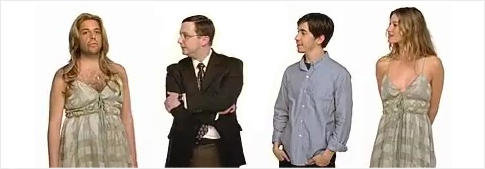
Watch “Get a Mac” – Better Results
October 2006 – In “Better Results”, the message is clear: if you want better results, you should just get a Mac. Of course, the ad is also known for featuring supermodel Gisele Bundchen, who is meant to represent the professional-looking Mac home movie. PC’s man in drag as her counterpart movie offering just doesn’t compare.
14. Get a Mac – Counselor
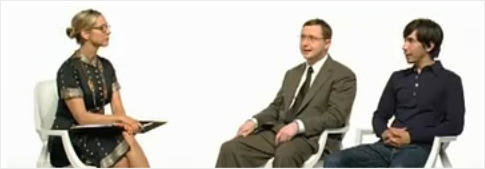
Watch “Get a Mac” – Counselor
October 2006 – In the “Counselor” Mac versus PC ad, Mac and PC sit before a female counselor, trying to work through PC’s growing inferiority complex – with little success.
15. Get a Mac – Self-Pity
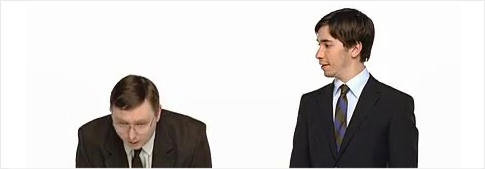
Watch “Get a Mac” – Self-Pity
October 2006 – In the “Self-Pity” Get A Mac ad, PC goes a bit mad (including rolling around on the floor, repeating “Why?” to himself over and over again) upon learning that Mac too can excel at office tasks – including running Microsoft Office.
16. Get a Mac – Gift Exchange
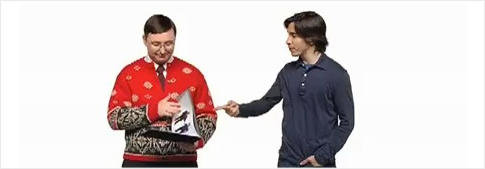
Watch “Get a Mac” – Gift Exchange
November 2006 – “Gift Exchange” delves into Mac’s iLife program once again – this time as a means of making creative and heartfelt holiday gifts.
17. Get a Mac – Meant for Work
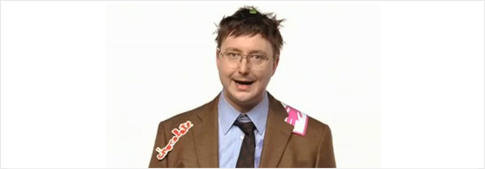
Watch “Get a Mac” – Meant for Work
November 2006 – In “Meant For Work”, viewers are urged to get a Mac because, despite popular opinion in the PC community, Macs are also great work computers – and aren’t just for the fun stuff, like writing blogs and making movies.
18. Get a Mac – Sales Pitch
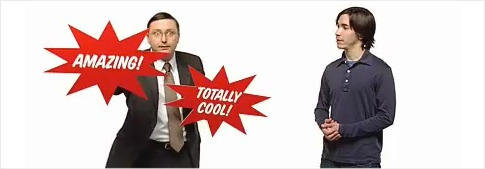
Watch “Get a Mac” – Sales Pitch
November 2006 – “Sales Pitch” shows PC as a sneaky salesman – a stereotype no one really likes or trusts – and he tries to employ every advertising buzzword in the marketing game to raise his coolness factor. Mac, however, doesn’t need to try so hard – a point made quite well in this get a Mac commercial.
19. Get a Mac – Goodwill

Watch “Get a Mac” – Goodwill
December 2006 – In “Goodwill”, the 19th Get a Mac commercial, Mac and PC are wearing Santa hats and vow to put aside their differences in the spirit of the holidays. PC struggles to be cordial, but in the end, goodwill does indeed take over – albeit temporarily.
20. Get a Mac – Sabotage
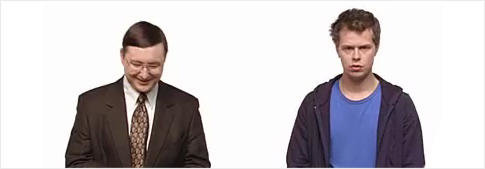
Watch “Get a Mac” – Sabotage
January 2007 – In the “Sabotage” Mac versus PC ad, PC hires a Mac imposter to downplay Mac’s obvious superiorities. Mac catches them in the act, however, and the plot is foiled.
21. Get a Mac – Surgery
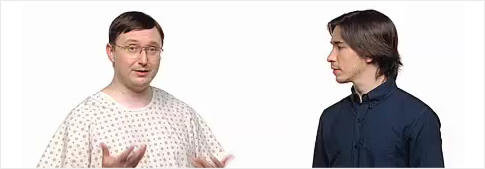
Watch “Get a Mac” – Surgery
January 2007 – The “Surgery” Get a Mac ad shows a worried PC, about to go in for surgery (wearing a hospital gown) for the Vista upgrade.
22. Get a Mac – Tech Support
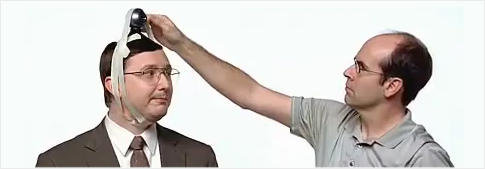
Watch “Get a Mac” – Tech Support
January 2007 – In the Get a Mac ad “Tech Support”, an IT guy joins PC and Mac – there to give PC a new camera. Unfortunately, the installation is anything but easy and doesn’t rival Mac’s built-in camera.
23. Get a Mac – Security

Watch “Get a Mac” – Security
February 2007 – The “Security” Get A Mac ad takes on the constant permission pop-ups that plague Vista by way of a secret service type character hovering over PC, asking him to cancel or allow any and every communication he has with the outside world.
24. Get a Mac – Computer Cart
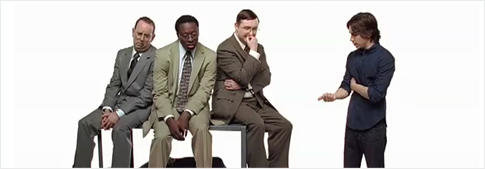
Watch “Get a Mac” – Computer Cart
April 2007 – In the “Computer Cart” Get a Mac ad, PC is joined by a few others of his kind, all on a push cart. They’re going in for service because of Vista’s many error messages and there’s no knowing when they’ll return – or IF they’ll return.
25. Get a Mac – Flashback

Watch “Get a Mac” – Flashback
April 2007 – “Flashback” takes the Mac versus PC battle back to their youth. Featuring two younger versions of Mac and PC, the conversation between the two is eerily similar – Mac trying to show off some of the cool stuff he’s able to do while PC calling all of the fun and creativity a total waste of time.
26. Get a Mac – Stuffed
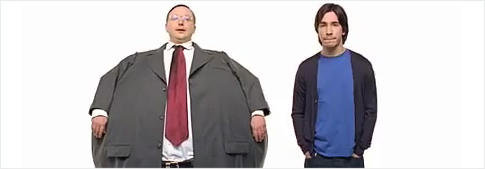
Watch “Get a Mac” – Stuffed
April 2007 – “Stuffed” is the first Get a Mac commercial to call into question the notorious amount of bundled and useless software that comes on every new PC. The point is made by PC wearing an enormous fat suit.
27. Get a Mac – Choose a Vista
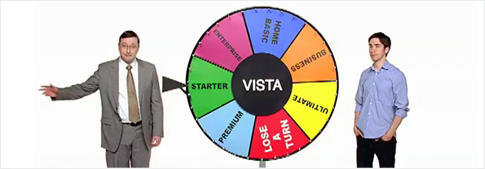
Watch “Get a Mac” – Choose a Vista
May 2007 – In “Choose a Vista”, viewers are walked through the confusing world of new PC operating systems to choose from in a game show style – in the end, giving them even more reasons to just get a Mac.
28. Get a Mac – Genius

Watch “Get a Mac” – Genius
May 2007 – In “Genius”, the Get a Mac ad campaign introduces viewers to the Mac Genius, the Genius Bar and the overall Apple culture of user education and customer service.
29. Get a Mac – Party Is Over
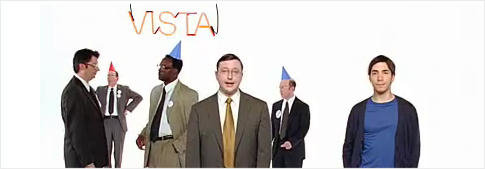
Watch “Get a Mac” – Party Is Over
May 2007 – In “Party Is Over”, PC and his buddies are “celebrating” the official release of Windows Vista – only there’s really not much to celebrate with all of the error messages and vulnerabilities it brings with it.
30. Get a Mac – Boxer

Watch “Get a Mac” – Boxer
November 2007 – PC tries to get back on his feet in the Get a Mac ad, “Boxer”. Wearing a full boxing uniform, PC tries to face off against Mac, who’s sales are going through the roof. PC says he’s “not going down without a fight,” but the fight is over before it begins – even the announcer is a big Mac fan.
31. Get a Mac – Podium

Watch “Get a Mac” – Podium
November 2007 – “Podium” is the Get a Mac ad that coincides with election season, 2007 and features PC behind a podium, speaking in a stereotypical politician style. While he pontificates, he also reveals off-mic that because of Vista’s flaws, many PC users are choosing to downgrade back to XP.
32. Get a Mac – PR Lady
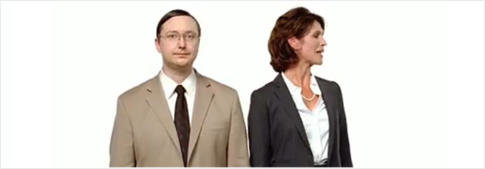
Watch “Get a Mac” – PR Lady
November 2007 – PC engages the help of a “PR Lady” in the Get a Mac ad of the same name. Every time he speaks, she tries to smooth things over – only it’s no use. Vista is a goner even in the eyes of the PR exec.
33. Get a Mac – Misprint
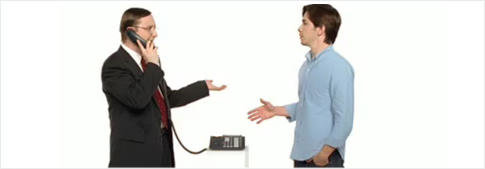
Watch “Get a Mac” – Misprint
December 2007 – “Misprint” is another Get a Mac ad that points out some of the rave reviews Macs are getting in the press. This time it hits a little to close for home for PC – by saying that the fastest Windows Vista machine PC World tested that year was actually a Mac. PC tries to get this obvious misprint corrected by calling the mag – only it’s not a misprint at all.
34. Get a Mac – Now

Watch “Get a Mac” – Now What?
December 2007 – In the “Now What?” PC versus Mac ad, PC has written a book of same name that tries to address some of the confusion that comes with buying a PC – and fails miserably.
35. Get a Mac – Santa Claus
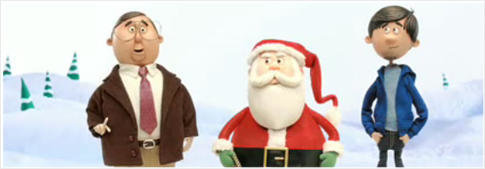
Watch “Get a Mac” – Santa Claus
December 2007 – The famous “Santa Claus” of Rankin/Bass claymation fame joins Mac and PC in this Get a Mac ad. PC and Mac do their own customized rendition of “Santa Claus is Coming To Town” and PC tosses in a few jabs at Mac in the process – to a less than enthused Santa Claus.
36. Get a Mac – Referee

Watch “Get a Mac” – Referee
January 2008 – Mac and PC get into the Superbowl spirit with “Referee”, the 36th Get a Mac ad. The two go tit for tat in a Mac versus PC battle – and the referee calls it in Mac’s favor in the end, even ejecting PC from the commercial.
37. Get a Mac – Time Machine

Watch “Get a Mac” – Time Machine
January 2008 – “Time Machine” is one of the only other Get a Mac ads to actually discuss one of the Mac-only programs that set it apart. This time the spotlight is on Time Machine, the data backup program. Even PC is impressed by Mac’s ability to clone himself for the ultimate level of user data protection.
38. Get a Mac – Breakthrough
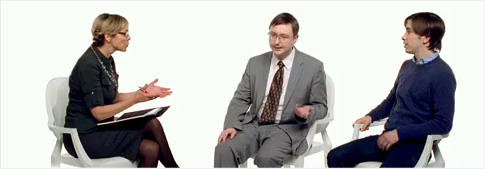
Watch “Get a Mac” – Breakthrough
April 2008 – The therapist from the ‘Counselor’ ad from the Get a Mac campaign’s first year is back and she’s there to facilitate a ‘Breakthrough’ in the Mac versus PC relationship – only PC hasn’t progressed at all and still harbors much resentment against Mac and toward his own makers.
39. Get a Mac – Office Stress
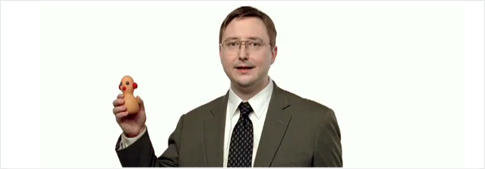
Watch “Get a Mac” – Office Stress
April 2008 – In the Get a Mac ad ‘Office Stress’, PC explains how the new release of Microsoft Office 2008 for Mac could cause Mac some work-related stress — something he’s not accustomed to.
40. Get a Mac – Yoga
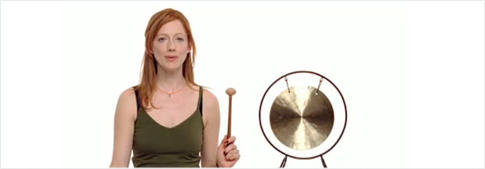
Watch “Get a Mac” – Yoga
April 2008 – PC tries to calm himself with a bit of “Yoga” in this 40th Get a Mac ad. Unfortunately, the yoga instructor is angry at PC for messing up her business’ financial records. It seems PC can never get any relief from the troubles that plague his users.
41. Get a Mac – Group
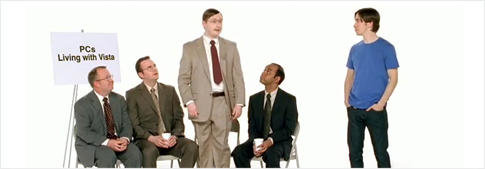
Watch “Get a Mac” – Group
May 2008 – In “Group”, PC tries to learn how to cope with his issues by attending a “PC’s Living with Vista” support group meeting. The meeting doesn’t go so well, however, since the PCs in attendance only continue to be plagued by problems.
42. Get a Mac – Pep Rally
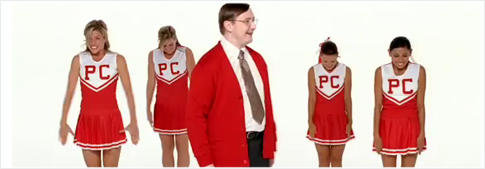
Watch “Get a Mac” – Pep Rally
May 2008 – In the “Pep Rally” Get a Mac ad, PC tries to turn his frown upside down with a pep rally – full with cheerleaders (himself, included). Problem is, the cheerleaders seem more apt to give three cheers to Mac.
43. Get a Mac – Sad Song
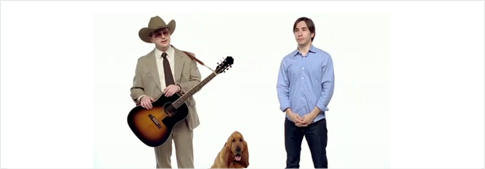
Watch “Get a Mac” – Sad Song
May 2008 – In “Sad Song”, PC tries to channel his negative energy through song. Taking on the role of a country crooner, howling Basset Hound at his side, PC sings a sad song that tells of all of his many imperfections and frustrations.
44. Get a Mac – Calming Teas
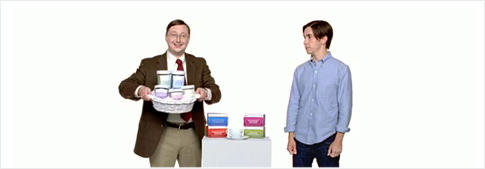
Watch “Get a Mac” – Calming Teas
August 2008 – Continuing down the anti-stress road, the Get a Mac ad, “Calming Teas” depicts PC as spokesperson for a number of calming tea brands that speak to the many Vista user frustrations, including Crashy Time Chamomile and Raspberry Restart.
45. Get a Mac – Off the Air
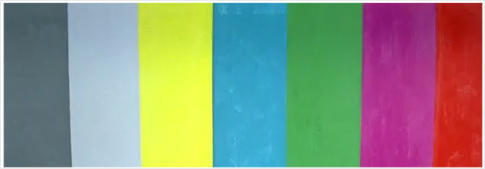
Watch “Get a Mac” – Off the Air
August 2008 – “Off The Air” is another Get a Mac commercial to point out the convenience and helpfulness of the Mac Genius. This time, they talk about how easy it is for Geniuses to help PC users make the switch to Mac. PC abruptly takes the commercial off the air upon hearing this.
46. Get a Mac – Pizza Box
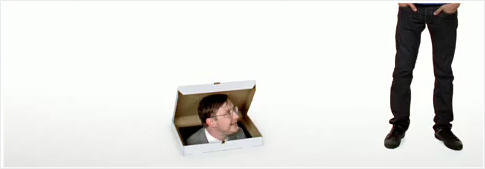
Watch “Get a Mac” – Pizza Box
August 2008 – “Pizza Box” is the Get a Mac commercial that shows just how popular Macs are on college campuses, and how desperate PCs are to get a slice of that action. PC disguises himself as a free pizza as a way to entice the 20-somethings to his side.
47. Get a Mac – Throne

Watch “Get a Mac” – Throne
August 2008 – In “Throne”, PC takes ownership of the fact that he is still the most pervasive computer being used on the planet today. Declaring himself king atop a throne, Mac continues to pick away at PC’s argument, as he slowly siphons off his customer base. At the end, a frustrated PC banishes Mac from his kingdom.
48. Get a Mac – Bake Sale

Watch “Get a Mac” – Bake Sale
October 2008 – In the “Bake Sale” Get a Mac ad, PC decides to try and raise money to fix Vista’s problems with a bake sale. Of course, the baked goods are very steeply priced. A mere cookie will cost you $10 million.
49. Get a Mac – Bean Counter
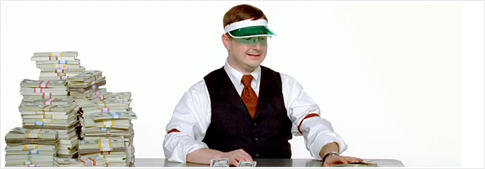
Watch “Get a Mac” – Bean Counter
October 2008 – In the “Bean Counter” Get a Mac ad, we see PC piling up stacks of money. A small stack is made to represent the budget being set aside to fix Vista. A much larger pile of money is being set aside for advertising. This is a clear jab against the pricey ad campaign Microsoft was running at the time.
50. Get a Mac – V Word

Watch “Get a Mac” – V Word
October 2008 – In this get a Mac ad, instead of calling it Vista, PC has decided instead to call his new operating system the “V Word” – as if it were some sort of obscenity to call it by its real name. He even goes so far as to hit a buzzer every time Mac tries to utter the OS’s name.
51. Get a Mac – I Can Do Anything
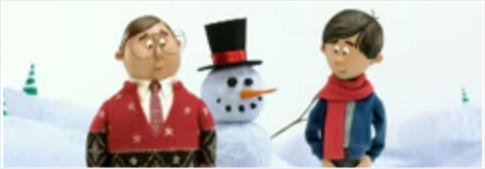
Watch “Get a Mac” – I Can Do Anything
December 2008 – In the Get a Mac ad, “I Can Do Anything”, PC and Mac are back as claymation characters and are joined by a wisecracking bunny who seems to like Mac much more than PC. After the bunny declares that he’s headed to the Apple store for some last minute holiday gifts, PC dumps snow on his head to shut him up.
52. Get a Mac – Tree Trimming

Watch “Get a Mac” – Tree Trimming
December 2008 – In the second holiday-themed Get a Mac ad of 2008, “Tree Trimming” PC and Mac return in their claymation form to decorate a tree. Mac goes on about how pleased he is to be spending the holidays in a truce and PC squirms. Urged to turn the holiday lights on the tree, it turns out that PC has written “PC Rules” with the light string. So much for the truce.
53. Get a Mac – Biohazard Suit
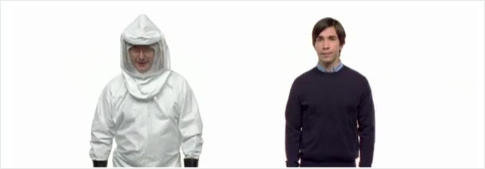
Watch “Get a Mac” – Biohazard Suit
April 2009 – In the Get a Mac ad, “Biohazard Suit”, the topic of viruses finally comes up. PC is plagued by them and Mac isn’t – and that’s why PC shows up wearing head to toe biohazard gear while Mac is wearing his usual hipster jeans and tee.
54. Get a Mac – Legal Copy

Watch “Get a Mac” – Legal Copy
April 2009 – In “Legal Copy”, PC attempts to point out some of his better points, but the screen on this Get a Mac ad only fills up with legal disclaimers every time he does.
55. Get a Mac – Stacks

Watch “Get a Mac” – Stacks
April 2009 – Another of the Get a Mac ads that speaks to some of Mac’s high points instead of PC’s low ones, “Stacks” discusses how Mac’s iPhoto has facial recognition to help make sorting photos that much easier. PC, on the other hand, is left to examine each photo one by one.
56. Get a Mac – Time Traveler
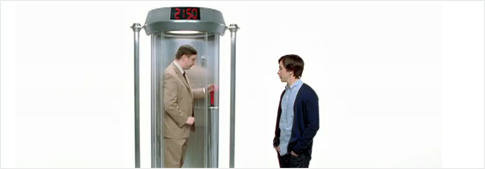
Watch “Get a Mac” – Time Traveler
April 2009 – In the Get a Mac ad “Time Traveler”, PC sets off to the future to find out if he’ll ever see a time when his operating system is stable. Unfortunately, future PC freezes just like present-day PC.
57. Get a Mac – Customer Care

Watch “Get a Mac” – Customer Care
May 2009 – In this Get a Mac commercial, the PC and Mac customer care experiences are pitted against one another. Instead of the real-life Mac genius standing by Mac, PC is left to wade through a labyrinth of automated customer care robots before speaking to a real person who seems anything but capable of curing what ails him.
58. Get a Mac – Elimination
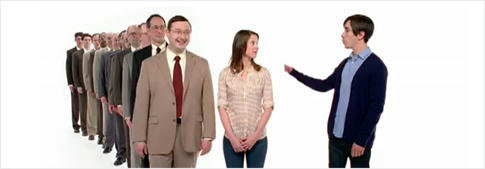
Watch “Get a Mac” – Elimination
May 2009 – “Elimination” is another Get a Mac ad that pokes fun at the pricey PC ad campaigns – this time, their “Laptop Hunters” commercials by Microsoft. Ultimately the laptop hunter in this commercial – a regular customer named Megan – chooses Mac, for all of the reasons one might suspect: a fast processor, its intuitiveness and user-friendly nature, etc.
59. Get a Mac – PC Choice Chat
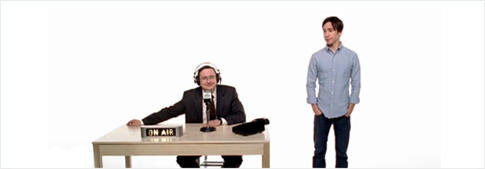
Watch “Get a Mac” – PC Choice Chat
May 2009 – In the Get a Mac ad, “PC Choice Chat”, PC hosts his very own radio talk show, where he offers advice on what computer listeners should purchase. Unfortunately, it seems everyone wants a PC that has what Mac can provide.
60. Get a Mac – Surprise

Watch “Get a Mac” – Surprise
August 2009 – In “Surprise”, PC disguises himself as Mac and tries to get a customer to get a PC and not get a Mac. Unfortunately, the customer sees right through him.
61. Get a Mac – Top of the Line
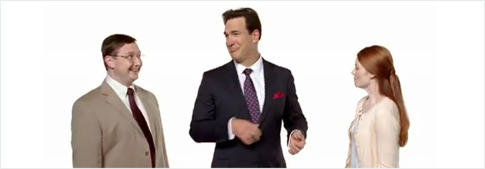
Watch “Get a Mac” – Top of the Line
August 2009 – “Top Of The Line” is another Get a Mac commercial featuring a customer looking to “buy a great computer.” Patrick Warburton is also there, playing the role of the slick Top Of The Line PC. His smooth talking doesn’t quite do the trick, however – and the customer ultimately turns to the Mac.
62. Get a Mac – Trainer
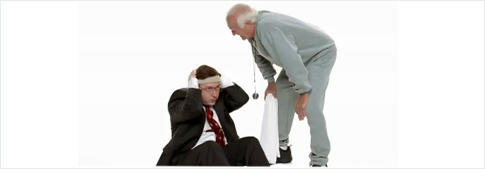
Watch “Get a Mac” – Trainer
August 2009 – PC still doesn’t want to go down without a fight and enlists the help of a “Trainer” in the so-named Get a Mac ad. Robert Loggia stars as the tough-talking trainer, who tries a bit of tough love to get PC back in the game. Unfortunately, the trainer even likes Mac better than PC.
63. Get a Mac – PC Innovations Lab
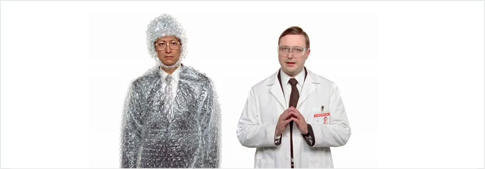
Watch “Get a Mac” – PC Innovations Lab
September 2009 – The “PC Innovations Lab” isn’t at all what one might expect – unless they consider bubble wrap around a PC to protect it from accidents to be an innovation. If users want real innovation, intimates the ad, they should just get a Mac.
64. Get a Mac – Broken Promises
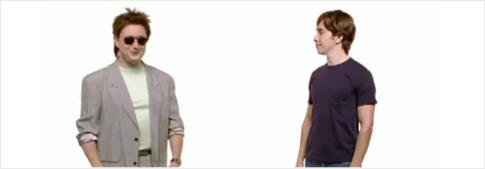
Watch “Get a Mac” – Broken Promises
October 2009 – PC sure makes a lot of “Broken Promises” – and that’s the point of the 64th Mac versus PC commercial which goes back through time, pointing out all of the hype and broken promises of Windows operatings systems of the past.
65. Get a Mac – PC News

Watch “Get a Mac” – PC News
October 2009 – In the “PC News” Get a Mac ad, PC sits behind an anchor desk and throws to a reporter who is live at the Windows 7 launch. The problem is, everyone seems to want to switch to Mac instead.
66. Get a Mac – Teeter Tottering

Watch “Get a Mac” – Teeter Tottering
October 2009 – The “Teeter Tottering” Get a Mac ad ends the campaign with a last jab against Windows 7. A PC user named Annie decides she’d rather switch to Mac instead it goes through the time and trouble of switching to Windows 7.